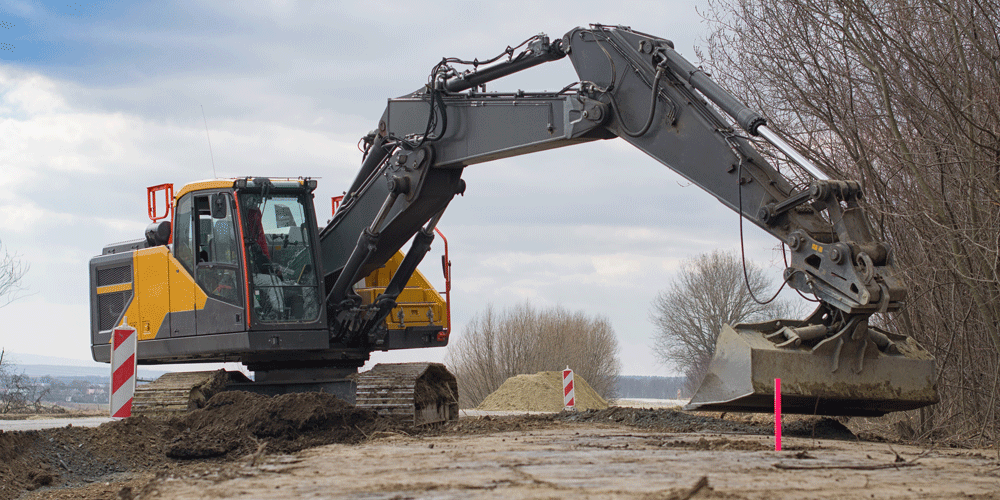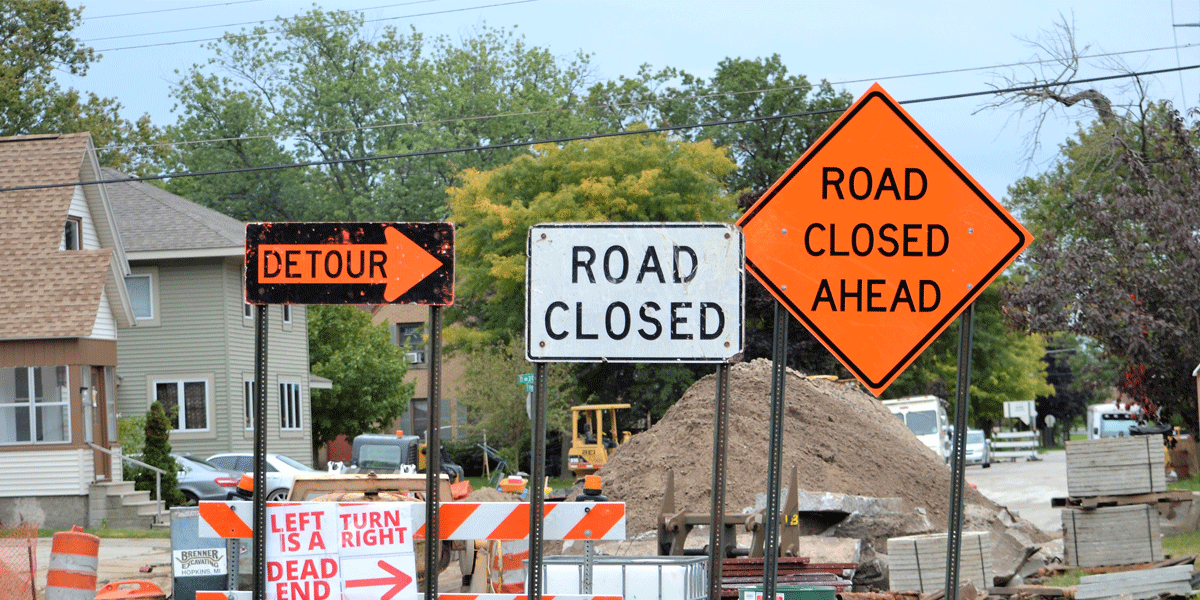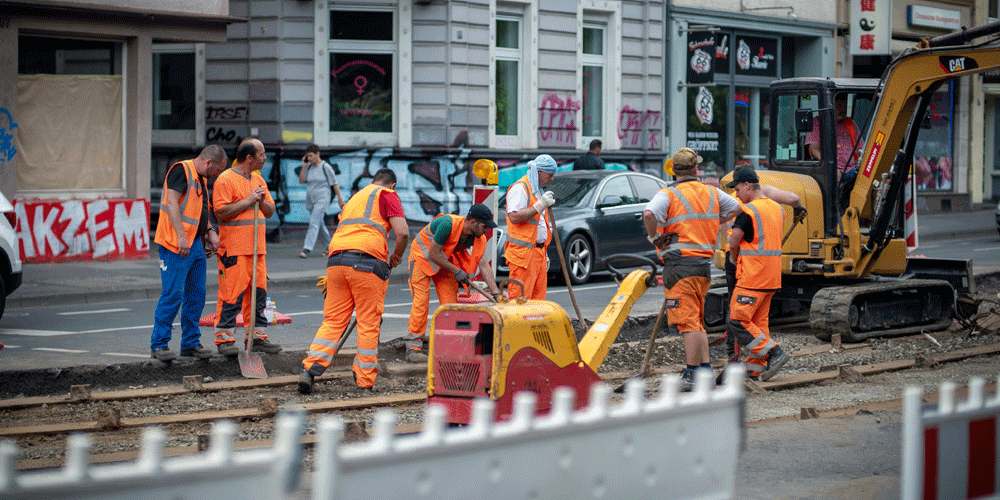William has been a truck driver since 2001 and has been driving for ATS for a decade. He has both tanker and open-deck experience.
Welcome to construction season! Just when we make it through winter, here comes another season that's tough to drive through. Between that and pothole season, it can be a literal nightmare trying to navigate the roads.
It’s like you’re playing a video game — navigating between obstacles with an oversized monkey throwing banana peels at you. If you’re not careful, it’s easy to speed through work zones, get a citation, or get into an accident.
I’ve been driving since 2001 and I’ve worked at ATS for almost 10 of those years. I’ve primarily moved open-deck freight, but I have some tanker experience too. So, I’ve had my fair share of experience driving through construction work, getting stuck for hours in stop-and-go traffic and finding alternate routes to avoid work zones.
I have advice for navigating construction season without getting into accidents and without any incidents. I also have trip planning tips to help you avoid getting stuck on roads you can’t be on.
These tips will help you navigate construction season and avoid any problems getting your loads delivered on time:

Construction Season Tips for Truck Drivers
When you follow these five tips, you'll be able to easily navigate construction season.
Tip #1: Trip Plan
The best thing you can do to prepare for driving through road construction is to know when it’s coming. There are a few major highways and states that are notorious for having a lot of construction zones through the summer and into the fall. (I’m talking to you, I-81 and I-95.) The more often you drive in these areas, the more familiar you’ll become.
When you’re trip planning for the day, check which routes have construction work. You can use your GPS, call 511 or look at maps online. Figure out how it’ll disrupt the flow of traffic and speed limits. Determine if there are alternate routes and decide which is the better route to take if you have options.
Perhaps you could pay a fee and take a toll road to avoid construction. Maybe you could go around the construction work. It might be a few extra miles, but it could save you a lot of time.
Weigh the pros and cons of driving through construction work versus avoiding it altogether. I know some drivers will refuse loads that take them through major construction zones if they don’t think they’ll be able to deliver the load on time.
Regardless of what you decide, it’s best to trip plan so you know what to expect. It’s better to know what you’re coming up against rather than being shocked by construction work and not putting extra time in your schedule for it.
Plan where you’re going to stop to fuel, take your break and park. Remember, some exits may be closed or you might have to take alternate routes. It’s better to know this ahead of time rather than risk getting lost.
While you’re planning your route, make sure you check the weather too. Check the weather channel or follow radar sites online. It’ll give you a better understanding of what’s coming next.
Related: Trip planning tips
Tip #2: Give Yourself Extra Time
If you’re driving through construction zones, be sure you give yourself extra time to get to your destination — whether you’re delivering a load or stopping at the halfway point to park for the night. It’s not uncommon for construction work to add an extra hour or two to your drive time. The roads can get extremely backed up — especially when you’re in busier cities or dealing with weekend or rush hour traffic.
Failing to plan for this can result in missing a delivery or drop-off appointment or going over your Hours of Service (HOS).
There’s nothing worse than getting to the point where you can see your exit for the truck stop, but you’re stuck for another hour or two in traffic as you watch the minutes tick by. (I’ve had it happen, and trust me, it’s awful. You’re so close, yet so far.)
It isn’t uncommon to run into accidents in work zones, either. That can back traffic up. But if you’ve already put some cushion in your timeline, you don’t have to worry.
With some advance planning, you can avoid these issues altogether.
Tip #3: Follow Reduced Speed Limits
You’ve seen the signs: “Fines double in work zones.” That should be enough incentive for you to avoid speeding through work zones, but it still needs to be said.
Follow the reduced speed limit through work zones and watch for workers. I’d even take it a step further and tell you to go five or 10 mph slower than the posted speed limit.
When you give yourself extra time, you can take it slower without worrying about missing an appointment. Driving at those slower speeds will help you save money on fuel, too.
Pair reduced speed limits with an increased following distance. When you do this, you give yourself more space and time to stop should you need to do so unexpectedly.
Tip #4: Be Alert and Drive Defensively
According to the Department of Transportation (DOT) Federal Highway Administration, nearly 30 percent of work zone crashes involve large trucks. That’s a big number.
Be hyper-vigilant when driving in work zones — not just for other drivers, but also for signs alerting you of upcoming work, changing speeds, and workers and flaggers.
Typically speaking, the general public is more impatient on the roads and you’re in their way. Pay close attention to their behaviors and give them extra space. Anticipate what they’ll do. It isn’t uncommon for them to try to slide in front of you at the last minute before a work zone starts.
You should also anticipate what the road crew and workers will do. They’re operating heavy equipment in heavy traffic areas with confined spaces. There may only be one or two lanes to travel on, so if you can give the road crew extra room by partially maneuvering onto the shoulder, do it.
Tip #5: Use Your Flashers
I like to use my four-way flashers and even my over-dimensional lights when I’m in a construction zone. It lets people know I’m there or alerts them to a hazard in front of me.
I’ve seen it happen far too often when someone pulls ahead of a truck driver because they didn’t realize there’s a road crew in front of them. They slam on their brakes, leading to a chain reaction accident.
It’s easy for a driver to lose control, especially when hauling such a large load. Ideally, no one will pass you in a construction zone, but it happens. If you go into a skid, and then an accident, it can easily lead to a multiple-lane pile-up.
Avoid Accidents
Navigating construction season as a truck driver can be challenging, but with proper planning and precautions, you can minimize the risks and ensure timely deliveries.
By trip planning and familiarizing yourself with construction-prone routes, you can anticipate disruptions and choose alternate paths when necessary. Giving yourself extra time to reach your destination accounts for potential delays caused by congested traffic and accidents.
Adhering to reduced speed limits and maintaining an increased following distance in work zones not only avoids fines but also enhances safety and fuel efficiency. Remaining alert and driving defensively is crucial, considering the high percentage of work zone crashes involving large trucks.
Finally, using your flashers and additional lights can help alert other drivers to your presence and prevent chain reaction accidents.
By implementing these tips, you can confidently navigate through construction season, ensuring successful and incident-free journeys.
Check out these other tips for avoiding accidents.


